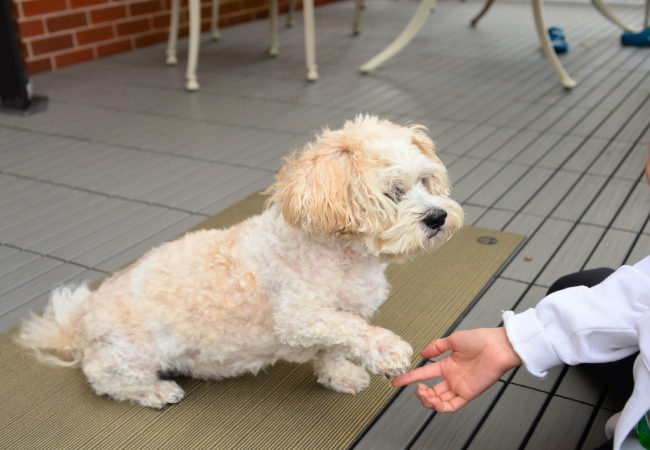How to Train a Deaf Dog 2025: Vet Reviewed Guide to Hand Signals, Safety & Support 🐶

In this article
How to Train a Deaf Dog 2025: Vet Reviewed Guide to Hand Signals, Safety & Support 🐶
By Dr. Duncan Houston BVSc
Training a deaf dog is different, but equally rewarding. Without relying on sound, you'll use visual cues, vibration, and body language to build clear communication, trust, and confidence. This guide walks you through how to teach attention, essential cues, recall, safety practices, and useful tools—alongside support from Ask A Vet,
1. 🧭 Understanding Dog Deafness
Dogs may be deaf due to congenital issues (often in merle or white-coated breeds), trauma, infections, medications, or age-related hearing loss. Deafness can be partial or complete—diagnosis may require specialized testing.
2. 👀 Teaching ‘Watch Me’ for Visual Focus
The most critical skill: gain your dog’s attention visually. Teach a “watch me” signal (e.g., tapping chest or using a flashlight) and reward every glance to your face.
- Use treats to lure eye contact.
- Mark with a hand flash or thumbs-up before treating.
- Practice daily until checking-in becomes automatic.
3. 🤚 Hand Signals for Basic Cues
Choose clear, consistent signals—many use American Sign Language patterns or classic obedience gestures.
- Sit: palm up, raise from waist to shoulder.
- Down: sweep palm downward at shoulder height.
- Come: arm sweep toward opposite shoulder.
- Stay/Wait: palm facing dog like a stop sign.
Train one cue at a time using luring, capturing, and rewarding patience and response.
4. 📣 Using Visual Markers Instead of Clickers
Deaf dogs can’t hear a clicker, so use visual markers (hand flash, thumbs-up) as conditioned reinforcers. Pair consistently with reward delivery.
5. 📳 Vibration & Light for Attention
Some trainers use mild vibrating collars for long-distance cues—only with careful conditioning so it's not aversive.
Flashlight cues (turn lights on/off) are another gentle attention-getting method.
6. ↪️ Long-Line Recall Training
Always start recall on a 6–20 ft long line. Encourage eye contact, signal “come,” and reinforce enthusiastically. Gradually increase distance in low-distraction settings.
- Inside sessions: space out treats and flash & reward on each glance.
- Outside: wiggle leash to gain attention, then recall.
- Use long line outside once indoor recall is solid.
7. 🛡 Safety & Handling Tips
- Always use fencing or long line—never allow off-leash in open spaces.
- Use collar tags or vests stating “Deaf Dog” to inform others.
- Wake with gentle touch or treat in front of snout—never startle.
- Minimize distractions during initial training.
8. 🤝 Building Communication & Desensitization
- Be deliberate with movements and body language.
- Reward for calm response to touch or unexpected contact to reduce startle.
- Gradually expose to environments to build focus and tolerance.
9. 📦 Tools & Supportive Gear
- Ask A Vet: get customized plans, video feedback, and reassurance.
- Vibrating collars: reliable only with careful positive pairing and gentle intensity.
10. 🧠 Common Challenges & Solutions
Frequent distraction: return to indoors, reward glance to handler.
No eye contact: flash light or leash wiggle to prompt check‑in.
Recall resistance: skip if too far—reward eye contact first before building distance.
Startle anxiety: reward calming touches, practice regularly.
11. 🗓 Training Timeline Snapshot
| Phase | Focus | Goal |
|---|---|---|
| Weeks 1–2 | ‘Watch me’, sit gesture, indoor recall | Reliable visual check‑ins and response |
| Weeks 3–4 | Down, stay cues, start light handling desensitization | Multiple cues in calm space |
| Weeks 5–6 | Long-line recall, move outdoors | Reliable recall at 20 ft |
| Weeks 7+ | Distraction training, public outings | Consistent communication anywhere |
12. ✅ Final Takeaways
- Training a deaf dog relies on visual clarity, consistency, and safe practices.
- Focus on ‘watch me’ attention, clean gestures, and enthusiastic reinforcement.
- Use tools—Ask A Vet.
- Stay patient—deaf dogs learn well and build amazing bonds!






